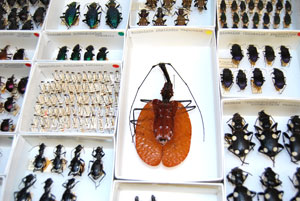Today QUEST TV broadcasts its half-hour documentary "Chasing Beetles, Finding Darwin," which tells the story of California Academy of Sciences beetle expert David Kavanaugh's unusual prediction that a new species of beetle would be found in Northern California's Trinity Alps.
The film follows Kavanaugh and his collaborator, University of California-Berkeley doctoral candidate Sean Schoville, as they search for the beetle, then put possible candidates to the test by dissecting them under the microscope and doing genetic testing on them.

It's rare for a biologist to predict the discovery of a new species – even for someone like Kavanaugh, who has discovered 73 new species. For his prediction, he drew inspiration from Charles Darwin's own prediction, which the English naturalist and founder of modern evolutionary biology made in 1862.
When Darwin saw an orchid from Madagascar with a foot-long nectare, he predicted that a pollinator would be found with a tongue (called a proboscis) long enough to reach the nectar inside the orchid's very thin, elongated nectar "pouch." Darwin's prediction was based on his finding that all living beings are related to each other and that some of them evolve closely together. His prediction came true in 1903, when a moth was discovered in Madagascar with a long, thin proboscis, which it uncurls to reach the nectar in the orchid's nectare. In the process of feeding from the orchid, the moth serves as its pollinator. The moth was given the scientific name Xanthopan morganii praedicta, in honor of Darwin’s prediction.